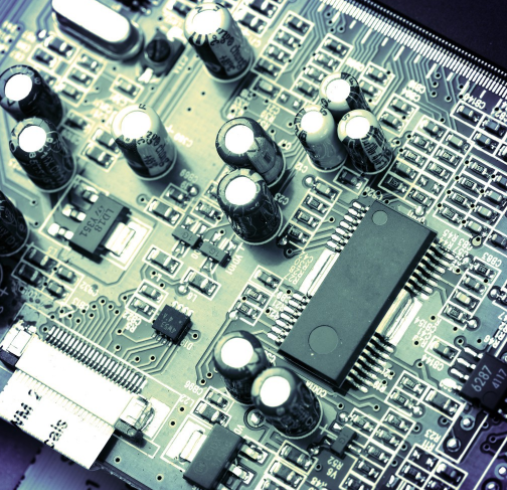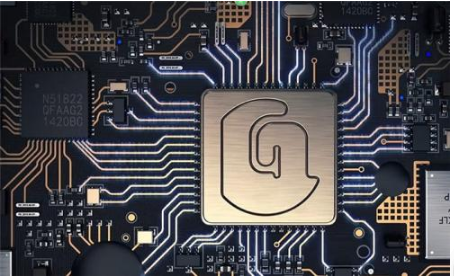
Differences between Analog Circuit and Digital Circuit PCB Design
This paper discusses the basIC SIMilarities and differences between analog and digital wiring, power supply, ground design, voltage error, and electrical interface (EMI) caused by PCB routing from the perspective of bypass capacitor More and more digital designers and digital circuit board designs in the engineering field reflect the trend of the industry Although the emphasis on digital design has brought about significant developments in electronic technology, there are, and will always be, part of circuit design with analog or real environment interfaces There are some similarities between routing strategies in analog domain and digital domain, but when it coMES to better results, simple circuit routing design is no longer a solution due to different routing strategies
PCB board

1. Similarities of Analog and Digital Routing Strategies
1.1 Bypass or decoupling capacitors
Both analog and digital devices require these types of capacitors when wiring The power supply side of the system needs another type of capacitor. Generally, the value of this capacitor is about 10uF The capacitor value range is between 1/10 times and 10 times of the recommended value However, the pins must be short and as close as possible to the device (for 0.1uF capacitors) or the power supply (for 10uF capacitors) Adding bypass or decoupling capacitors to the circuit board and placing these capacitors on the circuit board are common sense in digital and analog design But interestingly, the reasons are different In analog wiring design, bypass capacitors are usually used for high-frequency signals on the bypass power supply If no bypass capacitor is added, these high-frequency signals may enter the sensitive analog chip through the power supply pin Usually, the frequency of these high frequency signals exceeds the ability of analog devices to reject high frequency signals If no bypass capacitor is used in the analog circuit, it will introduce noise and, in more serious cases, vibration in the signal path
Decoupling capacitors are also required for digital devices such as controllers and processors, but for different reasons One function of these capacitors is to act as a "mini" charge bank In digital circuits, switching grid states usually requires a large amount of current Due to switching transients on the chip and through the circuit board during switching, it is beneficial to have additional "standby" charges If there is not enough power to perform the switching action, this will cause a large change in the power supply voltage Excessive voltage variation may cause the digital signal level to enter an uncertain state, and may lead to incorrect state machine behavior in digital equipment Switching current flowing through the circuit board trace will cause voltage changes There is parasitic inductance in the circuit board track The following formula can be used to calculate the voltage change: V=LdI/dt Where V=voltage change; L=inductive reactance of circuit board track; DI=change of current flowing through the track; Dt=time of current change Therefore, it is good practice to apply bypass (or decoupling) capacitors at the power supply or at the power supply pins of active devices for a number of reasons Power cable and grounding cable shall be laid together The positions of power cable and grounding cable are well matched, which can reduce the possibility of electromagnetic interference If the power cord and ground wire are not matched correctly, the loop in the system is designed, which may generate noise On this board, the designed loop area is 697cm2. It is unlikely that radiated noise on or outside the circuit board will induce voltage in the loop The difference of route strategy between analog domain and digital domain
The basic knowLEDge of circuit board layout is applicable to analog circuits and digital circuits The basic rule of thumb is to use an uninterrupted plane This common sense reduces dI/dt (current versus time) effect in digital circuits. It can change the ground potential and introduce noise into analog circuits The wiring technology of digital circuit and analog circuit is basically the same, with one exception Another point for analog circuit is to make the digital signal line and loop in the ground plane as far away from the analog circuit as possible This can be achieved by connecting the analog ground plane to the system ground connection separately, or placing the analog circuit at the far end of the circuit board and the end of the line This is done to protect the signal path from external interference This is unnecessary for a digital circuit. It can withstand a lot of noise on the ground plane without any problem
1.2 Location of components
As commented above, the noise and "quiet" (non noise) parts of the circuit are separated Generally speaking, digital circuits are "rich" in noise and insensitive to noise (because digital circuits have a large voltage noise margin); In contrast, the voltage noise tolerance of analog circuits is much SMAller In either case, analog circuits are very sensitive to switching noise
In the wiring of mixed signal system, the two circuits are separated Two basic parasitIC components that may cause problems are easy to design on PCB: parasitic capacitance and parasitic inductance When designing a circuit board, parasitic capacitance is generated when two traces are close to each other This can be done: on two different layers, place one track on the other; Or, on the same layer, place one track next to another In the two tracking configurations, a change in voltage over time (dV/dt) on one trace may generate current on the other trace If the other trace is high impedance, the current generated by the electric field will be converted into voltage Fast voltage transients usually occur on the digital side of analog signal design If the trace with fast voltage transient is close to the analog trace with high impedance, the error will seriously affect the accuracy of the analog circuit In this environment, analog circuits have two disadvantages: their noise tolerance is much lower than that of digital circuits; High impedance trajectories are more common One of the two technologies described below can be used to reduce this phenomenon A common technique is to change the size between traces according to the capacitance equation The effective size to change is the distance between two tracks Note that the variable d is the denominator of the capacitance equation. With the addition of d, the capacitance reactance decreases Another variable that can be changed is the length of the two traces In this case, the length L decreases, and the capacitive reactance between the two traces also decreases
Another technique is to route grounded traces between these two traces Ground wire impedance is low, and adding such a track will weaken the interfering electric field The principle of parasitic inductance in a circuit board is similar to that of parasitic capacitance That means leaving two traces On two different layers, place one track on top of the other; Or on the same layer, place one track next to another, as shown in Figure 6 The change of current on one trace with time (dI/dt) will generate voltage on the same trace due to the inductive reaction of this trace; And due to the existence of mutual induction, which will plot a proportional current on another trace If the voltage variation on the track is large enough, the interference will reduce the voltage tolerance of the digital circuit and cause errors This phenomenon is not unique to digital circuits, but it is very common in digital circuits with large transient switching current Eliminate potential noise of electromagnetic interference source, and separate "quiet" analog circuit from noisy I/O port In an attempt to achieve a low impedance power supply and grounding network, the inductive reactance of digital circuit conductors should be minimized, and the capacitive coupling of analog circuits should be minimized
2. Summary
Cabling strategies are often presented as a rule of thumb because it is difficult to test the ultimate success of a product in a laboratory environment. Therefore, although the routing strategies of digital circuits and analog circuits are similar, it is important to recognize and take seriously the differences in routing strategies Once the digital and analog ranges are determined, careful wiring is the key to success
The above is the explanation given by the editor of pcb circuit board company.
If you want to know more about PCBA, you can go to our company's home page to learn about it.
In addition, our company also sells various circuit boards,
High Frequency Circuit Board and SMT chip are waiting for your presence again.
然后
联系
电话热线
13410863085Q Q

微信

- 邮箱











